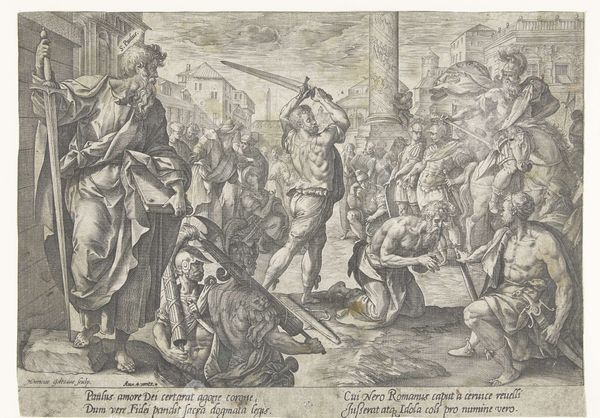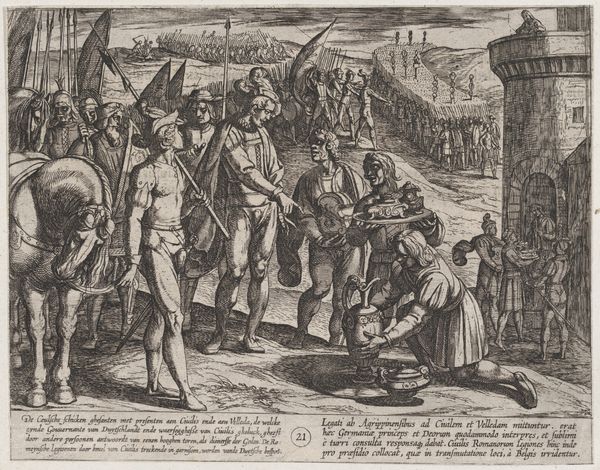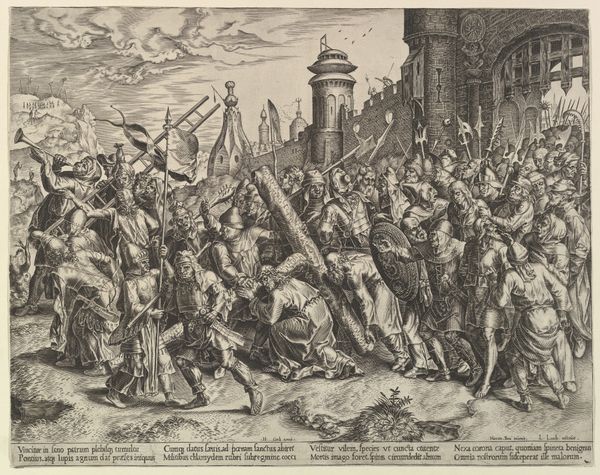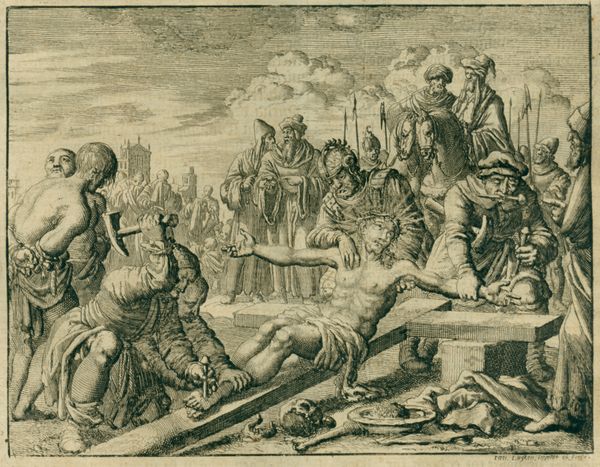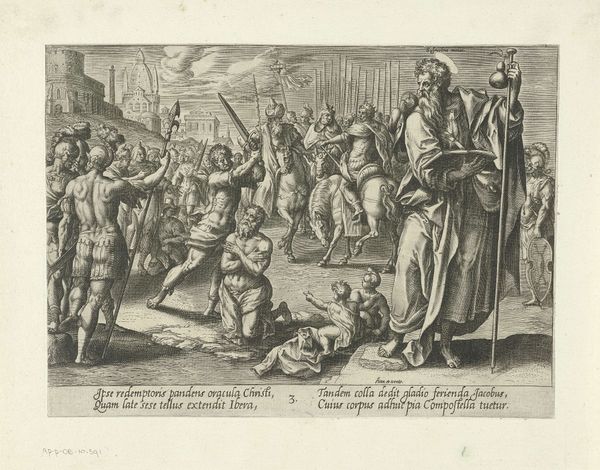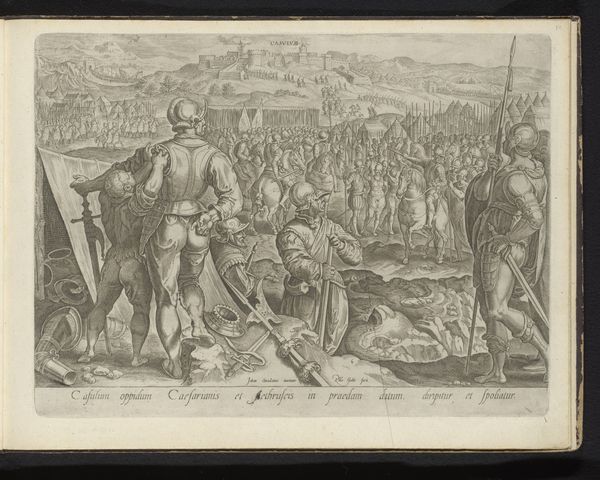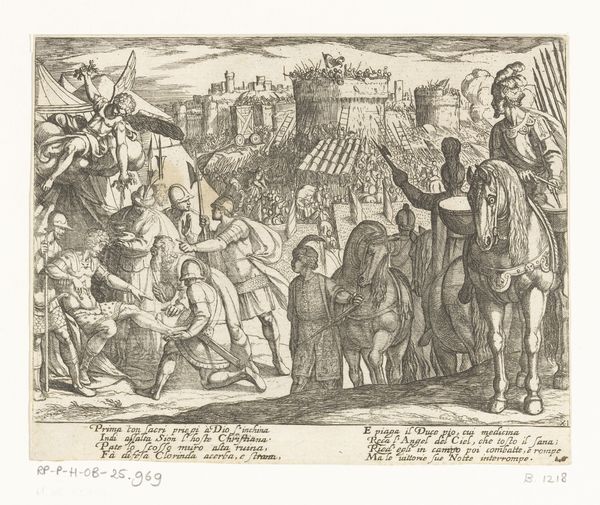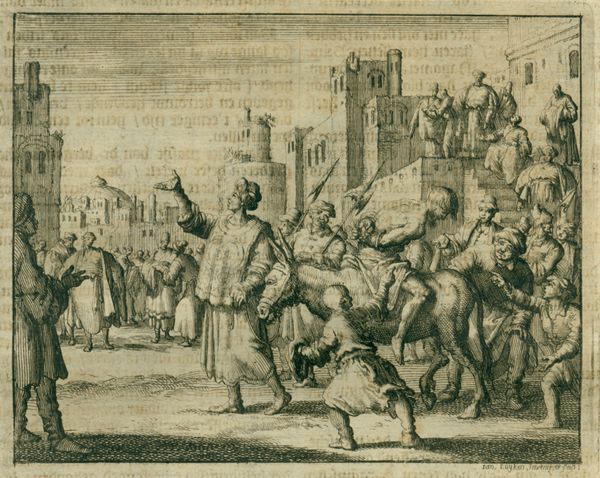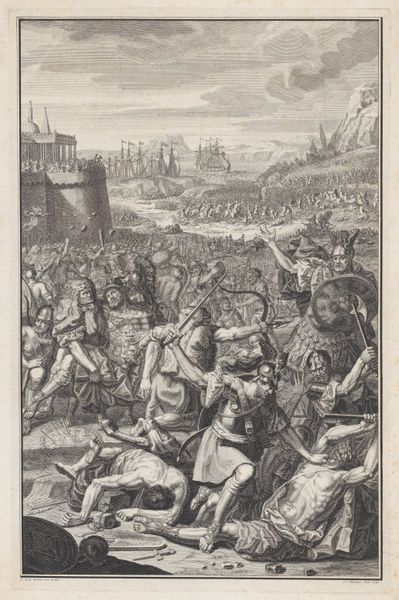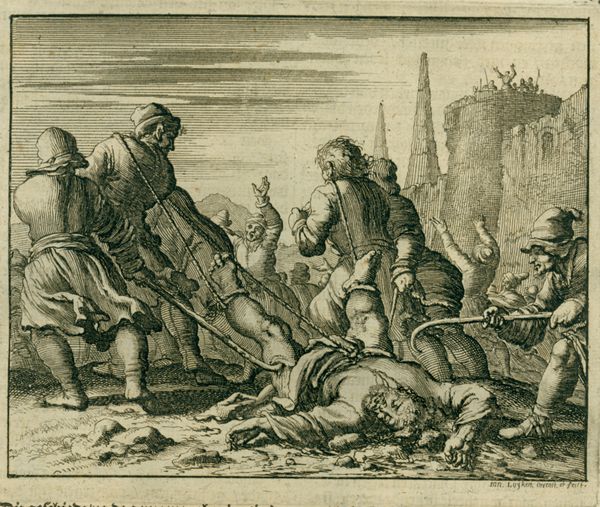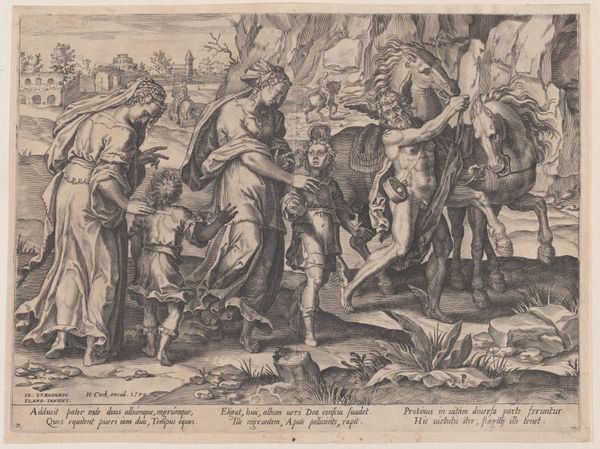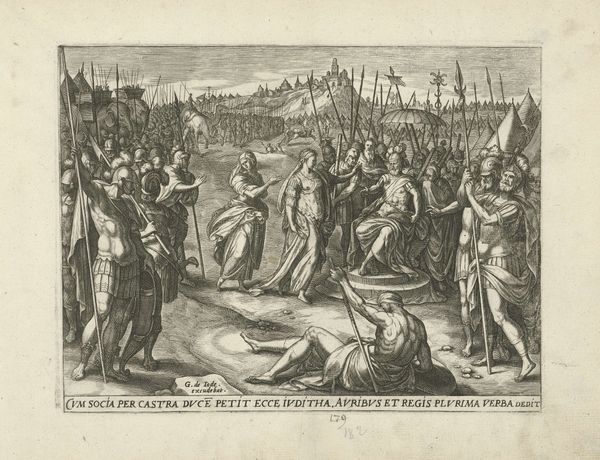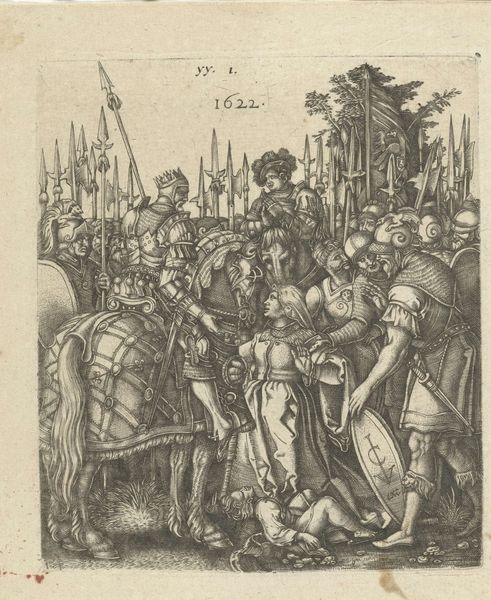
Plate 2: The city of Rome taken by Constable of Bourbon, from the Triumphs of Charles V 1614
0:00
0:00
drawing, print, engraving
#
drawing
# print
#
war
#
soldier
#
horse
#
history-painting
#
engraving
Dimensions: sheet: 12 5/8 x 16 9/16 in. (32 x 42 cm)
Copyright: Public Domain
Curator: We are looking at "Plate 2: The city of Rome taken by Constable of Bourbon, from the Triumphs of Charles V," an engraving made in 1614 by Cornelis Boel. It resides here at the Metropolitan Museum of Art. Editor: My first impression is of a tightly packed composition. There’s an intensity conveyed by the stark contrast and the sheer number of figures crammed into the scene. The image almost vibrates with a sense of chaos and tension. Curator: The historical context here is paramount. The image portrays the Sack of Rome in 1527, a pivotal and brutal event in European history when unpaid troops of the Holy Roman Emperor Charles V ransacked Rome, marking the end of the High Renaissance. The artist's strategic placement of Bourbon directs our gaze, doesn't it? Editor: Indeed. Boel's handling of line, especially in the massed soldiers, is masterful. Look at the rhythmic repetition of spears and shields. It's a beautiful depiction of conflict when considered solely on composition, though morally questionable in its detachment from human suffering. What semiotic meanings would you derive from such contrast and patterns? Curator: Formally, the deep blacks anchor the foreground while the lighter, hazier background suggests distance and the broader scope of the battle, but that distance doesn't offer any sense of security; it highlights the all-consuming nature of the conflict. Socially, this work probably reflects the propagandistic uses of imagery in legitimizing imperial power and the role of military action. How do museums contextualize images of conflict these days? Editor: Increasingly, institutions address ethical implications head-on, providing space for diverse perspectives on such representations. An engraving like this offers an important point of discussion on war and political strategy as seen through the aesthetic conventions and socio-political lenses of its time. Curator: Absolutely. Examining the visual construction of power within such historical events remains a crucial role for us. I found it revealing to look closely at how this event, once considered historical documentation, still allows room for discussion today.
Comments
No comments
Be the first to comment and join the conversation on the ultimate creative platform.
